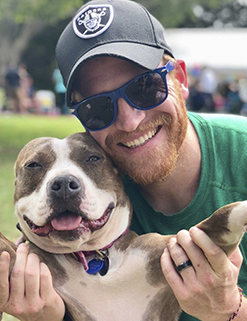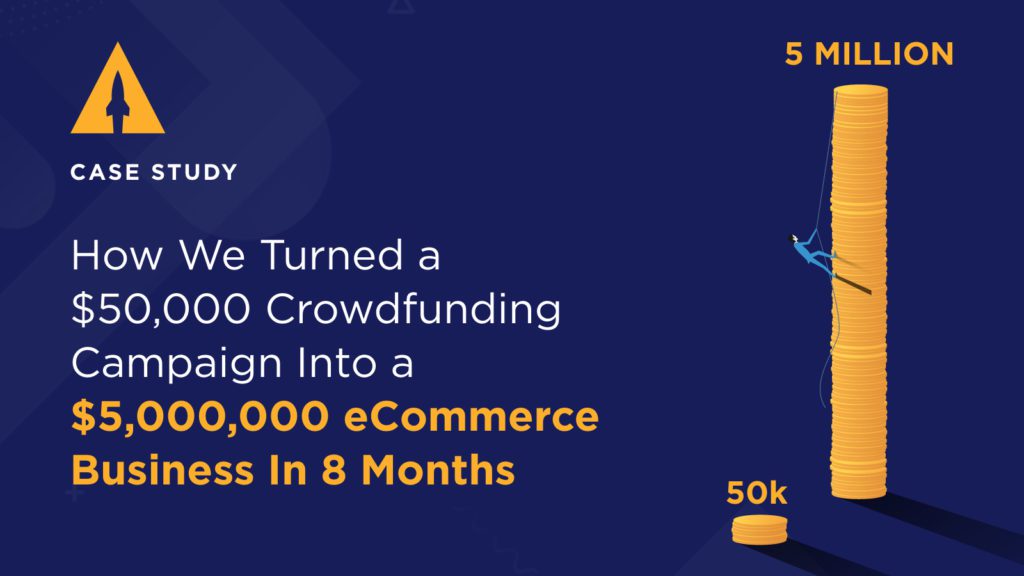
This past year was big for eCommerce as more and more companies made the full switch to digital sales – especially those that turned a crowdfunding campaign into a business.
Crowdfunding is one of the most effective methods for launching a consumer product. From market validation to cheaper customer acquisition costs, the benefits are vast. However, while crowdfunding is an effective entry point, it’s just the beginning. To truly scale your business, you must take what you learned from your crowdfunding campaign and execute on a comprehensive eCommerce strategy.
Our eCommerce team, ScaleBoom, has led the charge for many of our partners that started their businesses on either Kickstarter or Indiegogo. But we’re going to focus on one company in particular today. Our client prefers to go unnamed in this case study, but they agreed to let us share this data.
Our client approached us after a successful crowdfunding campaign they ran on their own with a “work-from-home” product. It wasn’t a huge campaign, but they hit their goal of $50K from a few hundred backers. Next, they were looking to establish their eCommerce presence and scale their brand. We started in April of 2020 and, by the end of the year, generated over $5 million in revenue. In this case study, we’ll highlight our process and how we were able to get such quick success turning our client’s crowdfunding campaign into a business.
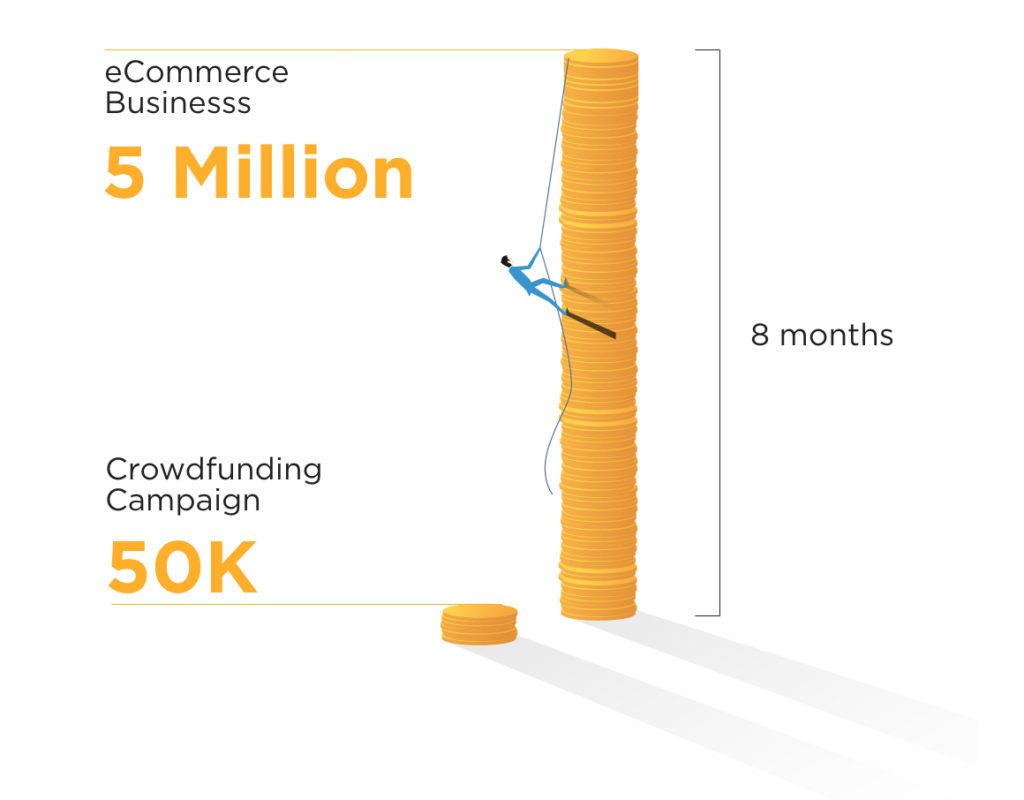
Contents
Phase 1: The Test
Everything starts with The Test: our system gauges market validation and gathers the data needed to develop our digital strategies to help scale businesses.
Our client had a website built on Wix as well as the assets from their crowdfunding campaign. Our team used these assets to develop the initial strategy.
For the initial two-week testing period, our Digital Strategists used our client’s existing website while creating our own set of messaging, copy, and audience targeting within Facebook’s ad platform.

Our client’s potential was apparent from the very start! In the first two weeks, our team was able to spend $4,578.49 with a directly tracked return on ad spend (ROAS) of 3.67x.

With the early indications of success and scale, we signed on as a full partner and prioritized three initiatives:
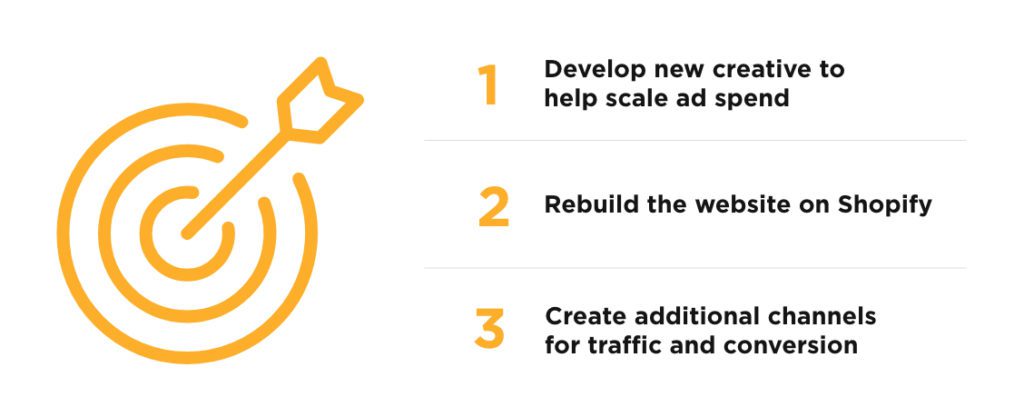
Phase 2: Early Initiatives
While our client had a website that was converting with our initial ad strategy, we knew we wanted to optimize the look and feel of the site, have freedom to add more functionality, and most importantly, optimize the site for mobile traffic.
Remember, current consumer behavior is all about the mobile experience. Consumers will buy on both phone and desktop, but that initial touchpoint is in mobile about 95% of the time, so it’s critical to have the site give a great first impression.
Before creating the site, we needed to go through a very thorough ideation, conceptualization, and planning process. This involved answering a number of questions:
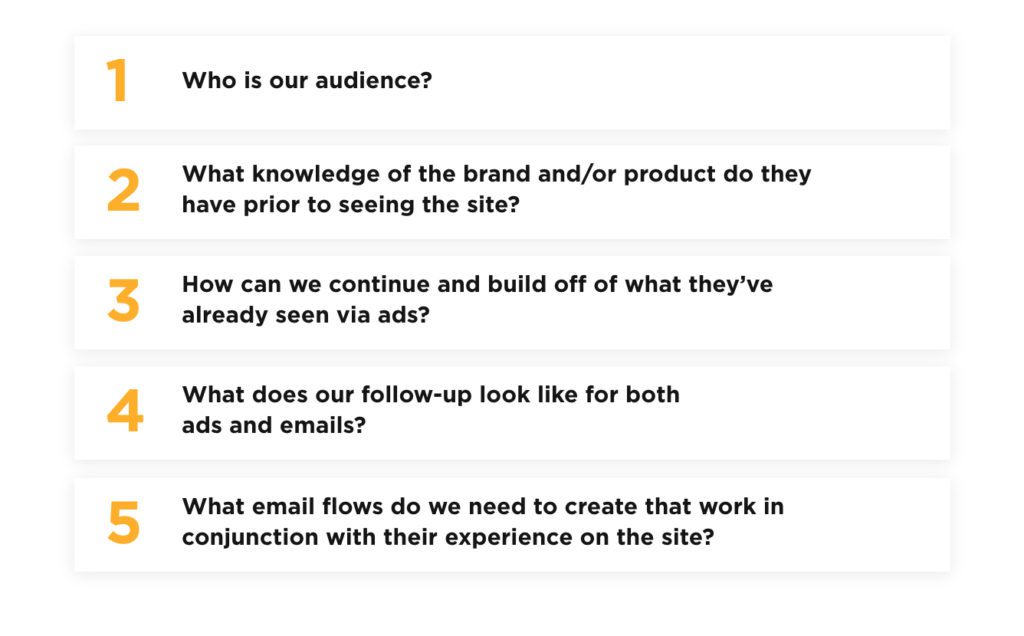
A full site rebuild takes thoughtful planning, time, and creative, so our first priority was to capture new assets that we could use for both advertisements and the new website. Once the new assets were captured, we were able to immediately put them into our advertising funnel and test our Facebook scaling strategies while simultaneously building the new site.
Armed with these new assets (and one key walkthrough video we had the founder film), we massively upped our spend and ROAS through late June, as we pushed the Shopify site live. Here’s a look at the summary row in the Facebook ad account:
The ads


The new creative and strategy resulted in big increases in spend and revenue, all while also increasing the ROAS by 38%!
Now came the time to push the new site live on Shopify. During this time, we also added key channels for more traffic and to help convert people after the initial touchpoint. The biggest changes came from Google Adwords and our Klaviyo email flows.
When following the customer journey, it’s important to make a great first impression, but multiple touchpoints are what really drive conversions. For email specifically, we created automated flows based on where the consumer was in the funnel.
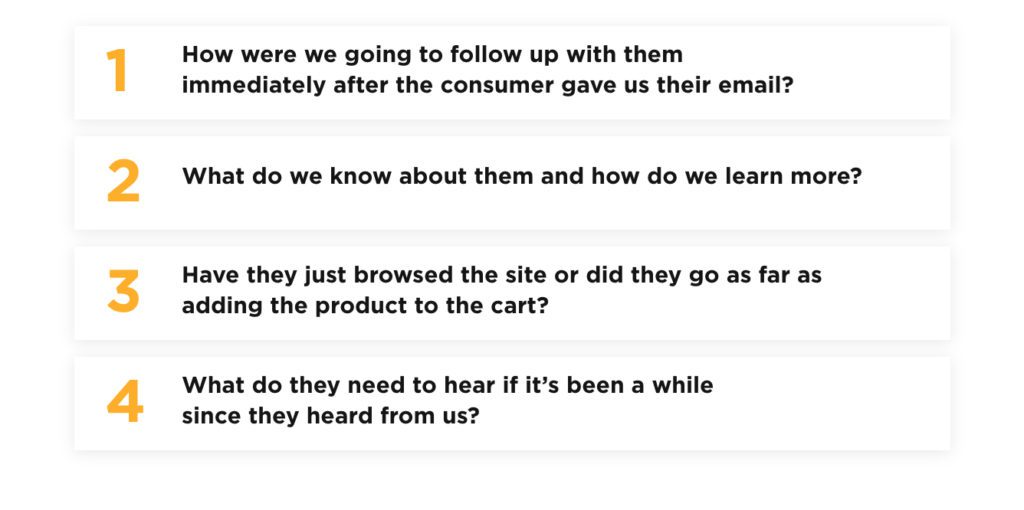
These questions and more led to specific content curated for the consumer and released at exact times to maximize A) the value they felt from the content and B) the likelihood of converting into a purchase.
Phase 3: Continued Conversion Optimization and Funnel Tests
Now, it would be easy to tell you there was one big “Aha!” moment that led to instant scale and success and millions of dollars and blah blah blah, but the true magic comes down to three things: time, experience and attention.
Creative goes stale. Messaging changes based on trends and current events. New apps are programmed to help create a better on-site experience. In short, everything can always be better. This was a big focus throughout the rest of the year until we entered the holiday season.
We tested everything.
We pressure-tested spend vs. frequency in ads and segmented our funnel more and more to accurately message our audience. Then we tested new ways of getting people to join our newsletter and the content we pushed out once they were part of our community. We freshened up the creative and tested new messaging and audiences more times than we could count. All of this led to some astounding results across the rest of the year:

Oh, and we scaled so fast we ran out of inventory… a few times. With production delays due to COVID-19, we had specific strategies to keep spend and revenue high while out of stock. A few takeaways from this process:
- Always allow people to buy the product
- Be transparent
The strategy
The strategy was simple: swap everything over to a pre-order and be transparent about when people could expect stock and their deliveries.
We changed site language, ad messaging, and email flows to reflect the current company climate so people knew exactly what they were signing up for. We also had to adjust our spending strategies, since people aren’t as likely to purchase off a pre-order.
The importance of this transparency is not rooted in maintaining the current pace of revenue… it’s in developing an open and honest relationship with your audience and community. What type of brand do you want to be? For our client, honesty and transparency trumped short-term revenue. This mentality is what helps build brands and companies that will survive the test of time. It builds customer loyalty, which will eventually lead to more growth and better partnerships.

Phase 4: Holiday Madness
As everyone expected, the holidays were a crazy time for eCommerce. Ad delivery costs skyrocketed, as did conversions, assuming you had the right messaging.
Oftentimes, companies abandon what they know about their audience and overplay the holiday. Fun fact: simply putting Black Friday in your messaging while abandoning all your USPs does not mean more sales.
Yes, it’s important to create messaging that is relevant to the season, but it’s also important to combine that messaging with appropriate segmentation and follow-up. How does your position/message change if the person has never heard of you? What about if they’ve been on your email list for a month?
For our client, we continued to hammer on what made them special and what problem they were solving. We also included strategic holiday messaging where appropriate.
We focused on the discount messaging for the consumers that already knew who our client was and why their product was awesome. For outreach to people we hadn’t advertised to yet, otherwise known as prospecting, we focused on education and how the product could help them with their struggles… and of course we had some fun with the holidays, as one should. 🙂
The result of this funnel-specific messaging was a huge increase in sales while maintaining a favorable effective discount rate. Even after Black Friday and Cyber Monday, our client’s effective discount rate was below 10% – 7.24%, to be exact. To add some context, the industry average is about 19%. We were able to scale and maximize profitability because of our proven advertising and conversion optimization systems.
In Summary
To wrap things up, here are some of the major highlights from our client’s 2020:
- They partnered with us in early April after completing their own crowdfunding campaign to turn it into a business
- ScaleBoom focused on advertising strategy and creative while building a new Shopify site, bringing in $339,312.92 at a 5.07x ROAS between April and June 2020
- After building and launching a new website and creative, we spent $987,300.13 to generate $5,080,895.57 in sales at a 5.15x ROAS throughout the rest of the year
- We maintained an effective discount rate of 7.24%, meaning we didn’t rely on discount messaging to acquire new customers
- Maximized holiday sales through strategic funnel-specific messaging
Want to become our next successful eCommerce client?
Apply to partner with us so we can talk about the possibilities for turning your crowdfunding campaign into an outstanding business!
